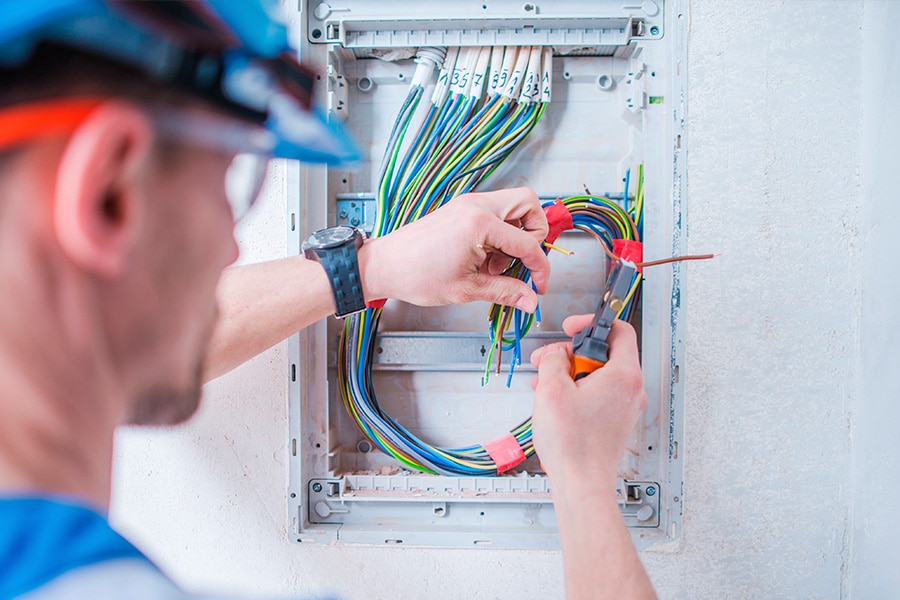The voltage, or tension of electrical power, in addition to the electrical current available in businesses or homes, can have enough power to cause burns or death. For this reason we must know all the electrical hazards that may exist to avoid at all costs any accident that may harm us.

Know the variety of electrical hazards.
What are electrical hazards?
When it comes to electrical risks, we refer to all those risks that are generated by the use of electricity. If we go to more technical definitions, risk means that it is the possibility that a misfortune or setback is generated, that someone may suffer some damage or harm.
Whereas Electrical Risk, is the possibility of such a mishap or misfortune occurring due to the damage that a person may suffer from the use of electricity. We know that electricity is always looking for a path to earth and if we stumble upon that path, we can receive a strong shock that could take our lives.
Why is electricity so dangerous?
- First, because we cannot perceive it by our human senses.
- This does not have any odor, it can only be detected based on the short circuits that decompose in the air, ozone appearing.
- It cannot be detected by taste, by the ear, and by sight.
- This, to the touch, can be fatal if it is not properly isolated. The human body can act as a circuit between two points of different powers. So it is not only the tension that causes the physiological effects, but the current that passes through our body.
How to prevent electrical accidents?
If you work in electrical installations, you must remember the five most important rules that you must follow and in the order that we will be presenting to you. In this way, you can avoid any risk that could harm you and spread these golden rules with other people who need it:
- Open all voltage sources. You must first cut off the voltage sources, for example inside the home, by cutting off the magnetic circuit breaker. If you work on batteries, you must disconnect them from the installation before starting any work.
- You must block the cutting devices. This allows us to ensure that there are no untimely closures in the disconnectors or switches, whether due to human error, technical failures or unforeseen issues.
- It is important to verify the absence of voltage using a measuring device such as a fluke.
- Grounding and short-circuiting all voltage sources found.
- Delimit and mark the workplace. It is very important to report the work and mark the space, this with security cards in order to avoid the action of other people, which could energize the intervened space.
Electrical installations
- Grounding in all the masses of the installation equipment.
- Install the fuse devices for a short circuit.
- An overload cut-off device.
- The safety voltage of command installations in 24 volts.
- Differential protection.
- Double electrical insulation of equipment and facilities.
Most common causes of electrical hazards
- Due to the use of faulty protective equipment, contact with cables or wires that are not adequately insulated and in direct contact with any conductor of electricity.
- Touching with dry hands an appliance that has an electrical charge, contact with cables or wires that are not adequately insulated.
- Having wet hands, and touching equipment that has an electrical charge, wires that are not separated, contact with cables and electrical conductors.
- Failure to follow the indicated safety procedure, faulty personal protective equipment and direct contact with electrical conductors.
You must bear in mind that all electrical accidents can originate due to defects in the insulation and the person becomes a direct path to ground. When touching an object with energy, or a conductor with the hand, it automatically generates a muscle contraction effect, causing the hand to close and hold more firmly, making it impossible to open.
Take into account 3 important points
- The higher the intensity, the greater the risk.
- Danger may decrease with increasing hertz amount.
- The greater the contact, the worse the risk can be.
What to do in the event of accidental electrical hazards?
- At no time do you touch the victim who had contact with electricity.
- Call paramedics immediately for immediate help.
- Turn off all sources of electricity if you can to avoid further hazards.
- Use a dry stick or any non-conductive product to push the person out of the electrical current, never touch directly.
- Keep in mind that the person who is electrified who is in a high place, may run the risk of falling to the ground at the moment that the current is cut off, in which case to lessen the blow you can use lots of clothes, a mattress, rubber bands or a large blanket between several people.
- After the victim is separated from the power stream, shock treatments must be administered and lightly covered for professional help to arrive.
- Give artificial respiration in case breathing has stopped.
- Perform cardiopulmonary resuscitation (CPR) in case of cardiac arrest and cover burns caused by electricity with a clean, totally dry cloth.
Always remember to take into account all this data on electrical risks to be prepared in the event of a dangerous situation, remember to call 911 as soon as possible, avoid touching burned objects and do not use water in case of electrical fires, and fire extinguishers "class C" such as carbon dioxide help extinguish small fires.
If this article was helpful, do not forget to visit our website to learn more important information such as Digital electronic Know the basics! Likewise, we leave you the following video to learn more about this topic.
